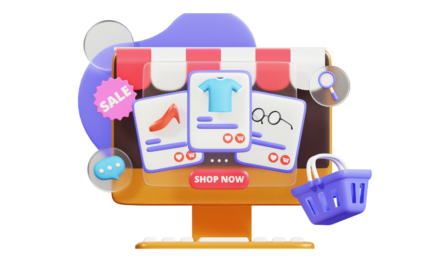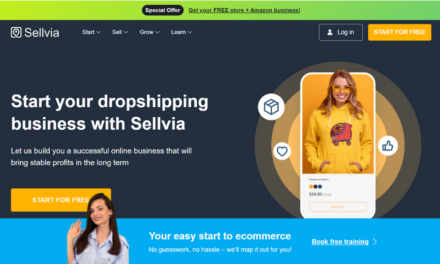In the rapidly evolving landscape of e-commerce, personalization has emerged as a cornerstone of successful online retail strategies. As consumers increasingly expect tailored experiences, businesses leverage customer data to create shopping environments that resonate with individual preferences, behaviors, and needs. This article delves into the concept of personalized e-commerce shopping, its importance, types, techniques, and best practices for implementation, along with real-world examples that illustrate its effectiveness.
What is Personalized E-Commerce Shopping?
Personalized e-commerce shopping refers to customizing the online shopping experience for each user based on their unique behavior, preferences, and purchase history. By analyzing various data points—such as customer demographics, search behavior, past purchases, and even social media activity—businesses can provide a shopping experience that feels uniquely tailored to each individual.
This level of personalization allows e-commerce platforms to present products and services more engagingly and relevantly, significantly enhancing the likelihood of conversion. The ultimate goal is to foster a relationship with the customer that goes beyond mere transactions, promoting loyalty and satisfaction.
Why is Personalized E-Commerce Shopping Important?
As the e-commerce sector becomes increasingly competitive, personalization is no longer optional; it’s a necessity. Here are several key reasons why personalized shopping is vital for modern e-commerce businesses:
1. Boosting Conversion Rates
Personalization significantly enhances conversion rates by delivering tailored product recommendations, marketing messages, and user experiences. For instance, a shopper who purchased running shoes may receive targeted advertisements for complementary gear, such as running apparel or fitness trackers. This relevance fosters trust and encourages more significant purchases.
2. Increasing Customer Loyalty
When customers feel valued and understood, they are more likely to return. Personalization creates an emotional connection between consumers and brands, reinforcing brand loyalty. Businesses prioritizing personalization often see higher customer retention rates, leading to increased lifetime value.
3. Enhancing User Experience
A seamless and enjoyable shopping experience is paramount in retaining customers. Personalized e-commerce strategies can reduce friction in the purchasing process by presenting users with curated content, relevant products, and tailored messaging. This enhanced experience improves customer satisfaction and encourages users to spend more time on the platform.
4. Gaining a Competitive Edge
In a crowded market, brands implementing effective personalization strategies can stand out. Businesses can identify trends and preferences by leveraging customer data, allowing them to respond swiftly to changing consumer behaviors and expectations.
Types of E-Commerce Personalization
E-commerce personalization can be categorized into several types, each utilizing different data sources and techniques:
1. Behavioral Personalization
This type involves analyzing customer behavior, such as browsing history and purchasing patterns, to deliver personalized product recommendations and marketing messages. For instance, an online bookstore might recommend titles based on previous purchases or browsing history.
2. Demographic Personalization
Demographic personalization leverages data such as age, gender, and location to tailor marketing efforts. For example, a clothing retailer might promote winter apparel to customers in colder climates while showcasing summer collections to those in warmer regions.
3. Contextual Personalization
Contextual personalization considers the user’s current environment, including their location, device, and time of day. For instance, a user browsing a mobile device may receive suggestions for mobile-friendly products or special promotions valid for a limited time.
4. Transactional Personalization
This type utilizes past transaction data to inform future recommendations. For example, a customer who frequently purchases pet supplies might receive promotions for related products, such as toys or grooming tools.
E-Commerce Personalization Techniques
To effectively implement personalization, businesses can employ various techniques that enhance the customer experience:
1. Product Recommendations
Utilizing algorithms to analyze browsing and purchase history allows businesses to provide personalized product recommendations. For example, Netflix uses sophisticated algorithms to suggest shows and movies based on viewing habits, enhancing user engagement.
2. Dynamic Content
Dynamic content refers to tailoring website content based on user behavior. Returning visitors may see different promotions or product highlights than first-time shoppers, creating a more relevant experience.
3. Segmentation
Segmentation involves categorizing customers based on shared characteristics. Businesses can tailor marketing messages to each segment, ensuring higher relevance and engagement. For example, a sports retailer might segment customers into fitness enthusiasts, casual athletes, and spectators, tailoring communications accordingly.
4. Email Personalization
Personalized email marketing campaigns can significantly boost engagement. Businesses can create relevant messages that encourage click-throughs and conversions by tailoring content based on past purchases or browsing behavior.
5. Abandoned Cart Recovery
Sending personalized reminders to customers who have abandoned shopping carts can effectively recapture lost sales. These messages can include product recommendations or special discounts to entice users to complete their purchases.
Best Practices for Implementing E-Commerce Personalization
To succeed in implementing e-commerce personalization, businesses should follow these best practices:
1. Collect and Analyze Customer Data
Data is the foundation of effective personalization. Businesses should invest in tools and technologies to collect and analyze customer data responsibly and effectively. This insight will inform personalized marketing strategies.
2. Implement a Personalization Platform
Adopting a personalization platform can streamline data collection and analysis, automating processes that lead to personalized recommendations and marketing efforts.
3. Test and Optimize
Continuous testing and optimization are crucial. A/B testing, user feedback, and ongoing analysis can help businesses refine their personalization strategies, ensuring they remain effective and relevant.
4. Ensure Data Privacy
Data privacy is paramount. Businesses must comply with regulations and best practices for data security, including obtaining user consent for data collection and implementing robust protection measures.
5. Provide Omnichannel Personalization
Creating a consistent experience across all channels enhances customer satisfaction. Businesses can foster a seamless shopping journey by personalizing interactions across email, social media, and mobile applications.
Measuring the Success of E-Commerce Personalization
To assess the effectiveness of personalization efforts, businesses should monitor key performance indicators (KPIs), including:
1. Conversion Rate
Tracking the conversion rate before and after implementing personalization strategies can indicate their effectiveness in driving sales.
2. Average Order Value (AOV)
Monitoring changes in AOV can reveal whether personalized recommendations and marketing efforts lead to increased spending per transaction.
3. Customer Retention Rate
Measuring customer retention rates can help businesses determine if personalized experiences lead to repeat purchases and long-term loyalty.
4. Bounce Rate
A decline in bounce rates after implementing personalization suggests improved engagement and relevance, indicating successful strategies.
5. Time on Site
Increased time spent on the site can signal a more engaging user experience, resulting from effective personalization.
E-Commerce Elements You Can Personalize
Businesses have numerous opportunities to personalize various e-commerce elements, enhancing the overall customer experience:
1. Product Recommendations
Using customer data to recommend products based on browsing and purchasing history can significantly improve sales.
2. Marketing Messages
Tailoring marketing messages based on customer preferences can create more targeted and relevant campaigns, leading to higher engagement.
3. Landing Pages
Customizing landing pages for different customer segments ensures content resonates with the audience, enhancing user experience.
4. Add-On Recommendations
Offering personalized suggestions for complementary products can increase average order value and customer satisfaction.
5. Search Results
Personalizing search results based on user behavior can streamline the shopping process, making it more efficient and relevant.
What’s the Best Way for an E-Commerce Business to Accept Payments?
Selecting the most suitable payment options is crucial for e-commerce success. Here are standard methods businesses can consider:
1. Credit and Debit Cards
Integrating credit and debit card payment processing is a standard practice for e-commerce businesses, providing convenience for customers.
2. E-Wallets
Offering e-wallet options like Apple Pay or Google Wallet can enhance the shopping experience by allowing customers to make quick, secure payments.
3. Bank Transfers
Direct bank transfers can be another option, especially for businesses dealing with larger transactions.
4. Cryptocurrencies
Accepting cryptocurrencies may appeal to tech-savvy consumers looking for alternative payment methods.
5. Installment Plans
Offering installment payment options can make larger purchases more accessible, encouraging customers to buy.
E-Commerce Personalization Examples
Real-world applications of e-commerce personalization can provide valuable insights into its effectiveness:
1. Amazon
Amazon is a leader in personalized e-commerce. It utilizes customer data to suggest products that align with individual shopping habits, driving significant sales.
2. Coca-Cola
Coca-Cola’s Share a Coke campaign exemplifies dynamic content. By printing customers’ names on products, the company creates a personalized experience.
3. ASOS
ASOS employs personalized email campaigns, tailoring product recommendations based on browsing history and previous purchases to enhance engagement.
4. Zappos
Zappos utilizes targeted landing pages to deliver a personalized shopping experience, ensuring content is relevant to individual users.
5. Booking.com
Booking.com personalizes offers based on previous travel bookings, creating a tailored experience that resonates with customer interests.
Final Thoughts
Personalized e-commerce shopping represents the future of online retail, offering businesses a powerful way to connect with customers on a deeper level. By tailoring the shopping experience to individual preferences, companies can drive higher conversion rates, enhance customer loyalty, and ultimately increase revenue.
To effectively implement personalization, businesses should focus on collecting and analyzing customer data, adopting personalization platforms, testing strategies, ensuring data privacy, and providing a seamless omnichannel experience. By personalizing various e-commerce elements, from product recommendations to marketing messages, businesses can create an engaging shopping experience that resonates with consumers.
As e-commerce continues to evolve, staying informed about the latest trends and techniques in personalization will be crucial for businesses aiming to succeed in this competitive landscape. Companies can foster customer loyalty through continuous optimization and implementation of best practices.










